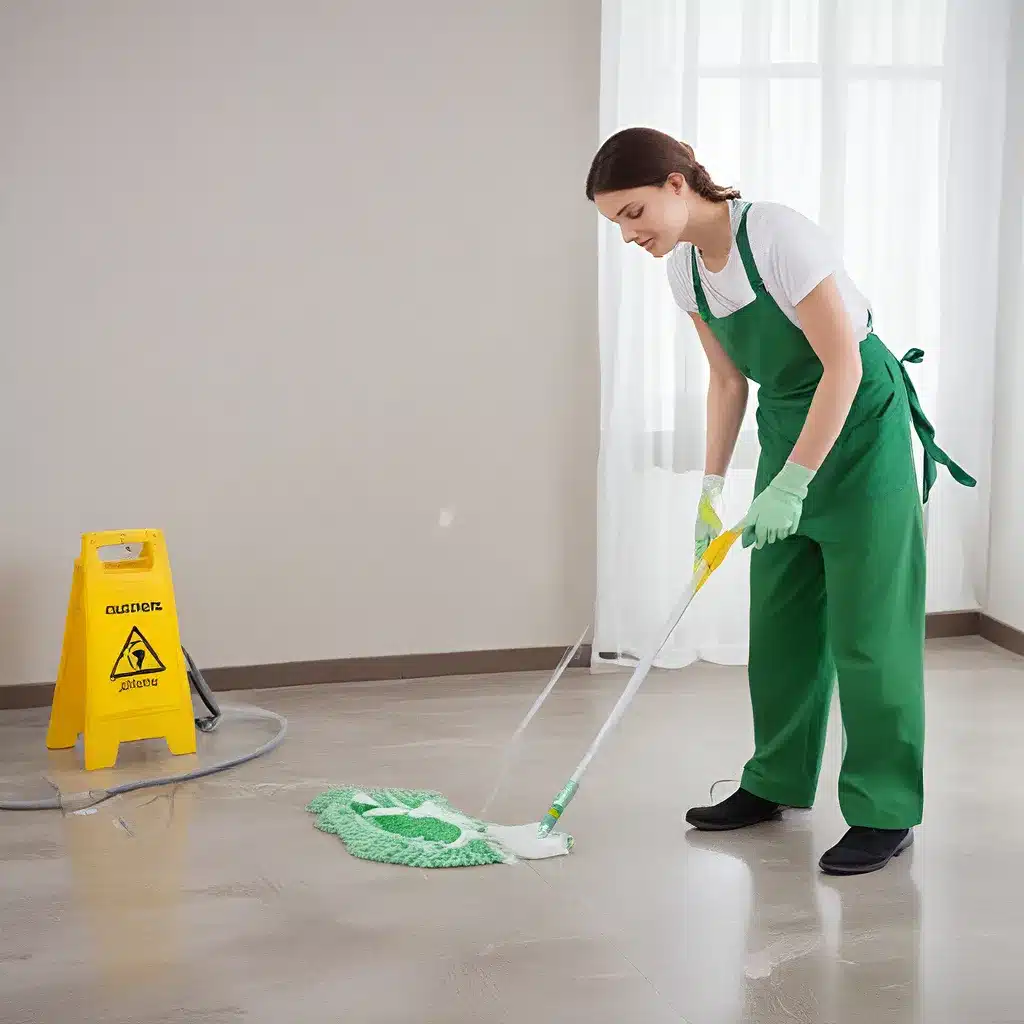In today’s rapidly changing world, it’s more important than ever to consider the environmental impact of our everyday actions. As a cleaning services provider, I’ve been on a journey to not only deliver top-notch results for my clients but also to do so in a way that minimizes our carbon footprint.
Let me tell you, it hasn’t been an easy road. When I first started looking into sustainable cleaning practices, I felt like I was navigating a maze of information – from new technologies and materials to confusing industry jargon. But as I dug deeper, I realized that making eco-friendly choices isn’t just about feeling good; it’s about making a real difference in the fight against climate change.
Embracing Low-Emission Cleaning Solutions
One of the most significant areas of focus for me has been finding cleaning products and equipment that reduce emissions. It turns out that many traditional cleaning supplies are chock-full of volatile organic compounds (VOCs) and other harsh chemicals that can be harmful to the environment and our health.
The Federal Government has actually taken some major steps in this direction, launching the Buy Clean Initiative to promote the use of low-carbon construction materials. I’ve been closely following this program, and I’m excited to see how it could potentially influence the cleaning industry as well.
By switching to eco-friendly cleaners that are plant-based, non-toxic, and biodegradable, we can dramatically reduce the amount of harmful emissions released during the cleaning process. And the best part? Many of these products work just as effectively as their conventional counterparts. It’s a win-win for both my clients and the planet.
Optimizing Equipment and Processes
But it’s not just about the products we use – the equipment and processes we employ in our cleaning services can also have a significant impact on emission levels. That’s why I’ve been exploring ways to optimize our operations for maximum efficiency and sustainability.
One area of focus has been investing in energy-efficient equipment, such as vacuums and floor scrubbers that use less power and generate fewer emissions. The Federal Government’s Buy Clean Initiative has been a valuable resource in this regard, providing guidance on how to incorporate low-carbon materials and technologies into our cleaning practices.
We’ve also been experimenting with innovative cleaning techniques that reduce the need for water and other resources. By adopting a more strategic and holistic approach to our cleaning processes, we can not only save time and money but also significantly lower our environmental impact.
Empowering Employees and Clients
Of course, all of these efforts would be for naught if I didn’t have the full support and cooperation of my team and my clients. That’s why I’ve made a concerted effort to educate and engage everyone involved in the cleaning process.
I’ve implemented comprehensive training programs to ensure my employees understand the importance of sustainable cleaning practices and are equipped with the knowledge and tools to implement them effectively. We’ve also worked closely with our clients to raise awareness about the environmental benefits of our eco-friendly approach, and many have been eager to lend their support.
By fostering a culture of environmental stewardship within our organization and our client base, we’ve been able to make significant strides in reducing our overall emissions and carbon footprint. It’s been a rewarding journey, and I’m proud to say that we’re making a real difference in the fight against climate change.
Embracing the Future of Sustainable Cleaning
As I look to the future, I’m excited about the ongoing research and innovation happening in the world of sustainable cleaning. The Biden-Harris Administration’s recent actions to support clean manufacturing and low-carbon materials are particularly encouraging, and I can’t wait to see how these developments might impact our industry.
One area that I’m particularly excited about is the potential of clean hydrogen technology to reduce emissions in hard-to-decarbonize sectors like the cleaning industry. The Department of Energy’s Hydrogen Shot initiative, which aims to reduce the cost of clean hydrogen by 80% in a decade, is a promising step in the right direction.
Additionally, the growing adoption of environmental product declarations (EPDs) – which provide detailed information about the life-cycle environmental impact of materials – is helping to drive greater transparency and accountability in the cleaning industry. By using EPDs to make more informed purchasing decisions, we can continue to make meaningful progress in reducing our environmental footprint.
Conclusion: A Cleaner Future, One Step at a Time
As I reflect on my journey towards more sustainable cleaning practices, I’m struck by the immense potential we have to make a real difference in the fight against climate change. It’s not always an easy road, but by embracing innovative solutions, empowering our teams, and collaborating with our clients, we can create a cleaner, more sustainable future for all.
So, if you’re a fellow cleaning services provider, I encourage you to join me on this exciting and impactful journey. Let’s work together to reduce emissions, protect the environment, and build a brighter tomorrow for generations to come. And if you’re a client, I’d love to hear your thoughts and ideas on how we can continue to push the boundaries of sustainable cleaning.
Together, I believe we can make a lasting impact and leave the world a little bit better than we found it.







